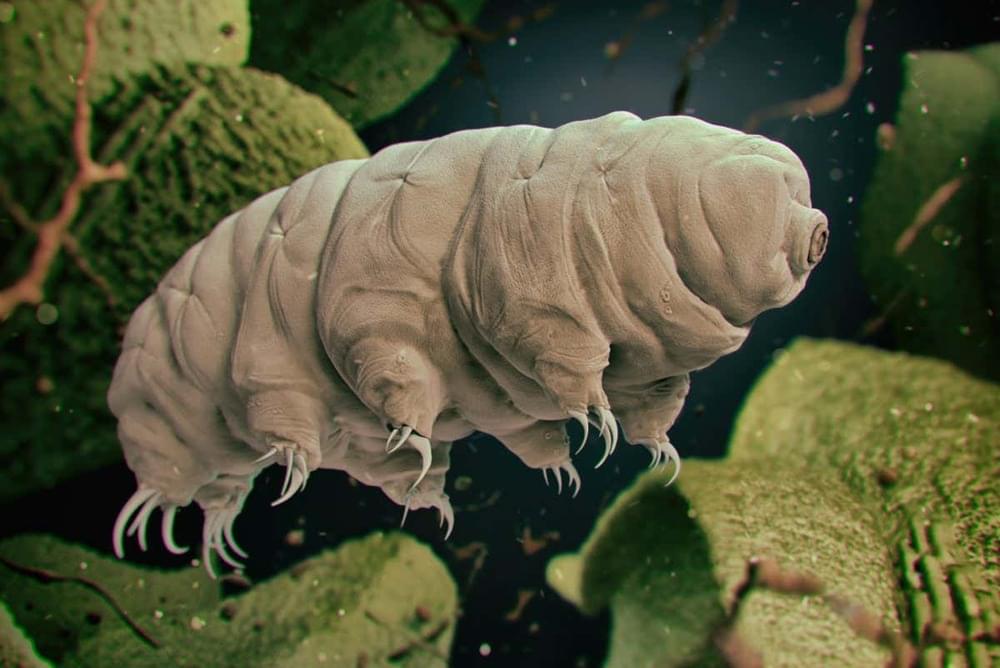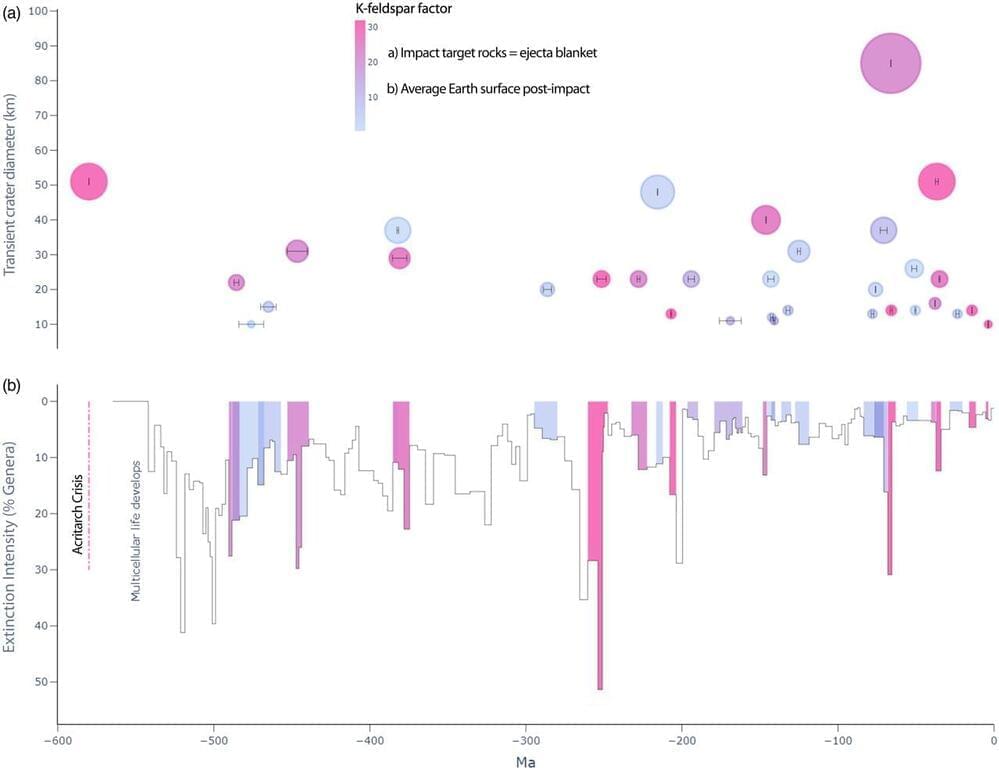A tardigrade cooled to near absolute zero and placed in a state of quantum entanglement survived its ordeal.




Meteorite impacts load the atmosphere with dust and cover the Earth’s surface with debris. They have long been debated as a trigger of mass extinctions throughout Earth history. Impact winters generally last 10 years, whereas ejecta blankets persist for 103–105 years. We show that only meteorite impacts that emplaced ejecta blankets rich in K-feldspar (Kfs) correlate to Earth system crises (n = 11, p 0.000005). Kfs is a powerful ice-nucleating aerosol, yet is normally rare in atmospheric dust mineralogy. Ice nucleation plays an important part in cloud microphysics, which modulates the global albedo.

The U.S. Air Force has failed for a third time to conduct a successful test of the rocket booster on a prototype AGM-183A Air-Launched Rapid Response Weapon hypersonic missile, or ARRW. This can only add to the palatable frustration within the service, as well as elsewhere in the U.S. military and in Congress, about the progress, or lack thereof, in the testing of various new hypersonic weapons.
The Air Force Life Cycle Management Command’s Armament Directorate confirmed to The War Zone today that another attempted ARRW flight test had failed on Dec. 15, 2021. The Air Force says that it has not yet determined the cause of the issue that led to the test being aborted. The prototype missile never left the wing of the B-52H bomber carrying it.
Astronauts have one of the most competitive jobs in the world — 18,300 people applied to be part of NASA’s 2017 class of astronauts, and only 12 made the final cut. But the process of finding astronauts with “the right stuff” has changed over time, and a lot of us Earthlings have the wrong idea about what NASA is looking for.
“I think a lot of the public conception is that we choose super-geniuses or super-jocks or super-pilots,” says Mike Barratt, a NASA astronaut and physician. “I would say that the astronaut office right now is full of people who are comfortable to be with. I mean, don’t get me wrong — we’ve got a couple of super-geniuses, but the main [goal] is that we’ve chosen well-rounded, well-behaved, professional people who are adaptable and resilient, and just someone you could see exploring a brand new world or locking yourself in a garage with for six months.”

Jupiter mission’s Ganymede flyby offers a dramatic ride-along. It is one of the highlights mission scientists shared in a briefing at American Geophysical Union Fall Meeting.
Sounds from a Ganymede flyby, magnetic fields, and remarkable comparisons between Jupiter and Earth’s oceans and atmospheres were discussed during a briefing today on NASA.

NSO Group, an Israeli tech firm, developed malware to hack iPhones by creating a “computer within a computer” capable of stealing sensitive data and sitting undetected for months or even years, researchers at Google have revealed.
The malware is part of NSO Group’s Pegasus software tool, which it is thought to have sold to countries including Azerbaijan, Bahrain, Saudi Arabia, India and the United Arab Emirates. US law-makers have called for sanctions against the firm.
An incredibly sophisticated piece of malware developed by the Israeli tech firm NSO Group works by creating an entirely separate computer inside the memory of an iPhone, allowing attackers to snoop and steal data.
Lightelligence, a Boston-based photonics company, revealed the world’s first small form-factor, photonics-based computing device, meaning it uses light to perform compute operations. The company claims the unit is “hundreds of times faster than a typical computing unit, such as NVIDIA RTX 3080.” 350 times faster, to be exact, but that only applies to certain types of applications.
However, the PACE achieves that coveted specialization through an added field of computing — which not only makes the system faster, it makes it incredibly more efficient. While traditional semiconductor systems have the issue of excess heat that results from running current through nanometre-level features at sometimes ludicrous frequencies, the photonic system processes its workloads with zero Ohmic heating — there’s no heat produced from current resistance. Instead, it’s all about light.
Lightelligence is built around its CEO’s Ph.d. thesis — and the legitimacy it provides. This is so because when “Deep Learning with Coherent Nanophotonic Circuits” was published in Nature in 2017, Lightelligence’s CEO and founder Yichen Chen had already foreseen a path for optical circuits to be at the forefront of Machine Learning computing efforts. By 2020, the company had already received $100 million in funding and employed around 150 employees. A year later, Lightspeed has achieved a dem product that it says is “hundreds of times faster than a typical computing unit, such as NVIDIA RTX 3080”. 350 times faster, to be clear.
The PACE’s debut aims to charm enough capital to comfortably reach its goal of launching a pilot AI accelerator product to the market in 2022. That’s still only a stretch goal in the company’s vision, however, its goal is to develop and distribute a mass-market, photonics-based hardware solution as early as 2023, targeting the Cloud AI, Finance, and Retail markets. Considering how Lightelligence managed to improve the company’s 2019 COMET design performance by a factor of a million with PACE in a span of two years, it’ll be interesting to see where their efforts take them when it comes to launching.
Real holograms?
Science fiction has repeatedly promised a future filled with holographic 3D displays, but that fantasy has always eluded reality — until now. A startup says it has created a new “solid light” display that renders photos and videos in three dimensions.
Photography and filmmaking have historically only existed in two dimensions without the aid of specialized headwear and viewing angles, but a new technology developed by Silicon Valley startup Light Field Lab wants to change that. The company has developed what appears to be the first successful 3D holographic display that can provide a true sense of depth to content from a variety of angles and free of glasses.
The company explains that in real life, light photons travel in all directions, ultimately reflecting bundles of rays that human eyes interpret as objects and depth. Lightfield Lab says that traditional flat displays can never replicate this experience, but thanks to its technology, it has been able to replicate it in a way that has never been done before.